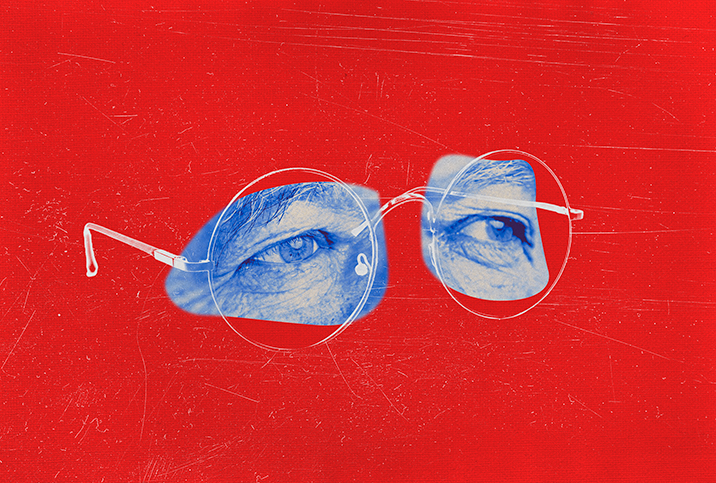4 Ways Men's Bodies Change After 40, And What to Do About It

As men hit their 40s, hormonal and physiological changes occur. You might notice a reduced sex drive, lack of energy and weight gain despite everything about your lifestyle remaining the same.
The good news is these changes aren't the be-all and end-all for this new stage of your life. Let's look at some important changes you might experience and see what experts have to say about keeping on top of them.
Decreased sex drive and sexual dysfunction
Reduced testosterone levels in older men can go unnoticed. A clinical paper published in The Journal of Clinical Endocrinology & Metabolism reported testosterone levels in men decline by approximately 1 percent per year after turning 40.
The same study explains that low testosterone levels can be linked to:
- Abdominal obesity
- Diabetes
- Dyslipidemia—an unhealthy level of cholesterol and other lipids in your blood
- Low bone density
- Reduced muscle mass
- Impaired sexual function
- Depression
- Frailty
- Decreased quality of life
Jerry Bailey is an acupuncturist, chiropractic and functional medicine physician at Lakeside Holistic Health, as well as a certified nutritionist. He discussed symptoms men often describe when reaching their 40s.
"The biggest problems that men start to notice are decreased sex drive, and often issues with mild erectile dysfunction," he explained. "Men report things like they 'just aren't as hard as they once were' or have no interest in sex with their partner."
"This is due to a linear decline of testosterone with age," said Jagdish Khubchandani, Ph.D., professor of public health at New Mexico State University. "Testosterone regulates sexual function in men."
This is supported by research: Though 40 is hardly geriatric, a study published in the Journal of the American Geriatrics Society in 2004 indicated that men tend to experience three fewer erections per month when they reach their 40s.
If those fewer monthly erections happen while you're sleeping, you probably won't notice them. But if they become a big enough issue to affect your sex life, it's time to look for a treatment that works.
Eddie® is an FDA-registered Class II medical device designed to treat erectile dysfunction and improve male sexual performance. Eddie was specially engineered to treat ED without the discomfort of traditional wearables or the side effects of medication. The subtle size and fast-acting results of Eddie allow men to treat their ED with more control.
"These symptoms can all add up to PHAT syndrome—polyhormonal adrenal testosterone syndrome," Bailey stated. Bailey is a prominent expert in the emerging science of PHAT syndrome and has given this name to the condition that many call male PCOS, or polycystic ovary syndrome. Although men do not have ovaries, research has shown they can develop characteristics of PCOS.
Alongside tests, a good diet and regular exercise are two key pillars you need to embrace when reaching your 40s.
"The great news is this condition is completely fixable, and a man can recover from all of these issues to live the life they want while restoring their performance, energy and drive in all aspects of life," Bailey added.
When it comes to problems with hormones, Bailey advises you to ask your doctor to order a DUTCH test to determine how you are metabolizing hormones. The DUTCH test is a Dried Urine Test for Comprehensive Hormones, which gives a thorough profile of sex hormones, adrenal hormones and melatonin to identify symptoms of hormonal imbalances.
Alongside tests, a good diet and regular exercise are two key pillars you need to embrace. Bailey advises that what you fuel your body system with is a significant factor in creating all health issues.
"The old adage of 'garbage in, garbage out' is true," Bailey explained. "If we fuel our body like a high-performance sports car, it will run and react that way. But, if we fuel it like our high school beater that we drove, then we get that performance out of it."
Decrease in sperm quality as men reach their 40s
The hormone changes men start to face at age 40 can present other challenges. Changes in sperm quality are most prominent after the age of 45 and are linked to:
- Increased conception time
- Lower sperm concentrations
- Lower motility
- Decreased morphology
- Lower seminal volume
- DNA fragmentation in sperm cells
There is also an association between the male partner's age and the incidence of congenital disabilities and chromosomal abnormalities in a child.
But, can you really change your sperm quality? Studies indicate physically active men have an improved hormonal environment and healthier semen production than sedentary men. So, once again, regular exercise is a pivotal part of maintaining hormonal and semen health.
Muscle mass loss in men in their 40s
The decline in testosterone continues to affect other parts of the body, too. Testosterone stimulates protein synthesis and muscle growth, so when it declines, it can lead to sarcopenia, a term for age-related muscle mass loss, which is associated with:
- An increased risk of falls and fractures
- An impaired cardiopulmonary performance
- Disability
- Mortality
Once you reach middle age, your muscle mass decreases by approximately 1 percent per year. Research shows that in cases of severe muscle mass loss, some people lose 50 percent of their muscle mass by the time they reach their 80s or 90s.
To combat this muscle mass loss, it comes back to exercise once again. Bailey advises that walking is a good start, but you need to include resistance training in your exercise regime to build muscle. Exercises such as lifting weights or using elastic resistance bands can help to maintain muscle mass and strength.
"Muscle mass is key to longevity," Bailey explained. "The more we have, the better we age. Increased muscle mass increases our longevity and decreases our risks of all-cause mortality."
Eyesight problems
"Presbyopia is a very common condition that develops with age," Khubchandani said. "This is where our eye lens has a declining ability to focus on objects that are near. It's sometimes known as age-related farsightedness and occurs because our lens has reduced flexibility with age. People usually notice symptoms of presbyopia in their early to mid-40s, and it can continue to worsen until around age 65."
This is not a gender-specific problem: It affects men and women equally. However, a study published in the journal Investigative Ophthalmology & Visual Science reported that women seek assistance with presbyopia symptoms earlier than men. Researchers say this is possibly because men and women have different preferred reading distances. They state that men tend to hold reading materials farther away from themselves than women do. It is also a condition not particularly well known, so symptoms of presbyopia can often go unnoticed for a while.
"Presbyopia can't be prevented or cured, but it's not a serious problem, and over-the-counter eyeglasses can help," Khubchandani said.
Most people can regain clear near vision for all of their lifestyle needs. The American Optometric Association recommends you have an eye exam every two years to assess your vision and eye health—and more frequently if advised by your doctor or you're at risk for eye concerns.
Khubchandani explained that while all of these problems are related to aging as a normal part of life, they can be accelerated by social, economic, physical health circumstances and life stressors. "Although we cannot stop these changes totally, we can slow them down by exercise, healthy diet, getting adequate sleep and stress management."


















